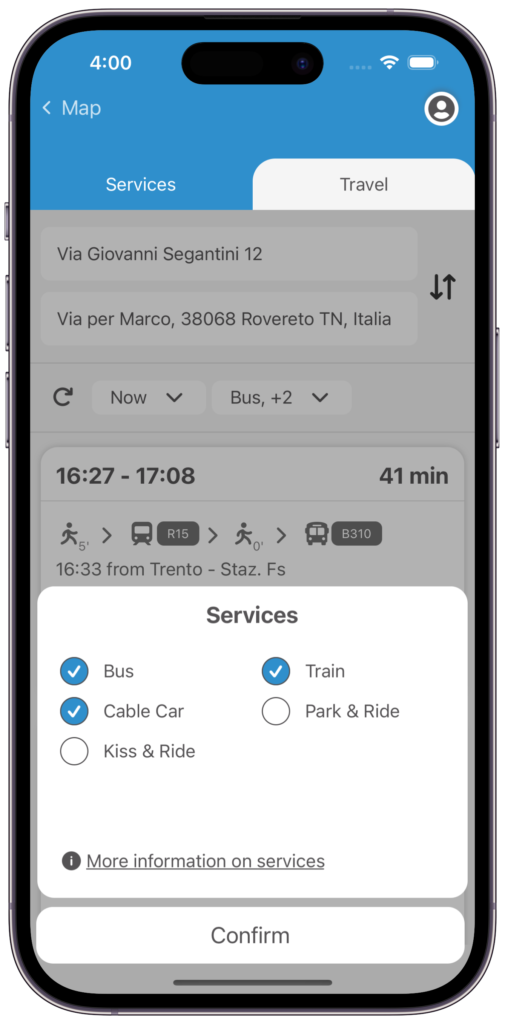While looking for the most suitable solution for your trip, it is essential to specify the means of transport you are willing to use to reach the desired destination. This is crucial to identify those options that are more in line with your preferences and travel needs. Once you have indicated the origin and destination of your trip, what combinations of transport modes would you choose?
Bus
The bus transport service can be offered both by public transport operators, operating in urban and suburban areas, and by private operators. In the public sphere, urban buses serve cities and metropolitan areas, facilitating the daily commute of citizens with routes that cover different areas, including historic centers, residential districts and industrial areas. Suburban buses, instead, connect different cities, often covering greater distances and connecting urban centers to neighboring municipalities or rural areas. Private bus companies usually offer services on demand or specialized connections, such as transfers to events, tourist centers or shuttles to airports.
This transport system is crucial for collective mobility, offering an affordable and efficient solution to reduce the use of private vehicles and promote more sustainable travel practices.
Train
The rail transport service offers a quick and efficient way to travel between different locations, nationally and internationally. Operating on fixed rails, it allows for long-distance and commuting journeys with regular schedules, significantly reducing the travel time as compared to road transport. The rail transport service may consist of urban lines, such as subways, regional lines and high-speed trains, connecting urban centres, suburban areas and different regions, contributing to the reduction of congestion and environmental pollution.
Cable car
The cable car offers an effective and panoramic way to overcome significant altitude differences, such as mountains, valleys or waterways, connecting two points via cable cabins. These cabins, which can vary in size to accommodate from a few to many people, travel from one station to another, offering a fast and direct solution without impacting land traffic. The cable car is particularly popular in tourist and mountainous areas, where it can serve both as an attraction and as a sustainable mobility solution, reducing the use of vehicles on the road.
Kiss & Ride
These are designated areas near public transport stations where passengers can be quickly dropped off or picked up by friends or family. These areas allow an efficient and hassle-free transfer from private to public transport, optimizing travel times and reducing the need for long-term parking near transport nodes. The expression “Kiss & Ride”, in fact, evokes the idea of a quick greeting before the passenger continues his journey with public transport.
Park & Ride
The Park & Ride concept allows commuters to leave their vehicles in dedicated parking lots, usually located in the suburbs or near public transport nodes, and then continue their journey using public transport services such as buses, trains, subways or e-scooters. This system aims to reduce urban traffic and pollution by encouraging the use of collective transport rather than individual cars within cities.
Bike & Ride
The Bike & Ride concept combines the use of bicycles with public transport, allowing cyclists to safely park their bikes in designated stations near bus stops, train stations or subways. This solution facilitates intermodal travel, allowing users to cover part of their journey by bicycle and the rest with public transport services, making travel more flexible and sustainable, as well as reducing the use of private cars in urban areas.





